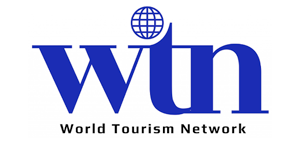Malaysia’s tourism industry is expected to take several years to recover to pre-pandemic levels, the meetings, incentives, conferences and exhibitions (MICE) sector appears to be recovering at a quicker pace.
In fact, it is possible that by year’s end, the industry will not only recover to its 2019 performance level but could surpass what it achieved that year, thanks to major support from Asean participants.
Malaysian Association of Convention & Exhibition Organisers & Suppliers (MACEOS) president Francis Teo tells The Edge that this is a welcome development, as the pandemic has caused the industry to lose out on four years of continuous growth.
Indeed, things are looking up. Last week, the Malaysia Convention and Exhibition Bureau (MyCEB), a division of the Ministry of Tourism, Arts and Culture, which was established to strengthen the country’s position in the international business events market, said that as at August, it had secured 149 business events happening throughout the year, contributing to an estimated economic impact of RM2.4 billion and welcoming 494,015 delegates to the country.
MyCEB promotes the country as a MICE destination for all players, including business events held at hotels. Apart from MyCEB, individual players and state level bureaus/convention centres also do their own marketing activities to attract events to the country.
MACEOS, which has more than 200 members, represents the whole business event economy, including most of the large-capacity convention and exhibition centres in the country. Thus, the performance of MACEOS members is a good indication of how the overall local MICE market is doing.
According to Teo, the MICE sector began to see a rebound last year, with 2,225 events held, of which 99% were physical events and 83% were corporate events and meetings. This compares with 236 events held in 2020 and 331 in 2021, which were either virtual, hybrid or physical.
“Business events were allowed to take place from October 2021, with strict conditions in attendance, but the significant increment was notable only when our borders were opened in April 2022 and the quarantine requirement was lifted the following month,” Teo says.
“Domestic events picked up tremendously in the second half of 2022, with most venues occupied during this period. Foreign event participation increased only in early 2023 and [subsequently] we started to see an influx of exhibitors in trade exhibitions, particularly originating from China markets.”
He adds that before the pandemic, the domestic versus foreign participation ratio would average at 80:20. Currently, the split is 90:10. “The majority [of pre-pandemic event participants] were from the Asean countries, and the notable single country [event participant] was from China. Today, the Chinese visitors have not returned to pre-pandemic levels yet.”
Exhibitions held this year included Archidex from July 26 to 29, with a total of 35,000 visitors, of which about 10% came from 100 countries; and the 38th Congress of the Asia-Pacific Academy of Ophthalmology — APOA 2023, held from Feb 23 to 26, hosting 4,500 delegates.
- TAGS / KEYWORDS:




.png)



















.jpg)




.png)










